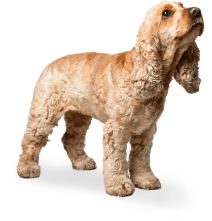

Your basket is currently empty.

Free UK Delivery. Exclusions apply.
Don't miss out! Add these must haves now.
Are you in the right place?
Please select your location so we can direct you to the right store...

Dalmatian
Dalmatians have gone from status symbols and carriage dogs to firehouse guardians and Disney fame. But behind those iconic spots, what are Dalmatians really like, and what do they need to thrive in a home?

Thought to have originated in Dalmatia (modern-day Croatia), Dalmatians likely have much older roots. First used for hunting, their striking looks and affinity for horses made them favourites of travelling nobility. Later, they became firehouse mascots, hunting rats in the stables, clearing the way for horse-drawn fire engines and protecting the horses as firefighters worked.
Today, Dalmatians bring their lively, loyal nature to family life. They make excellent watchdogs, but without early socialisation their protective instincts can sometimes slip into sensitivity or guarding. Exposure to different people, sounds and experiences helps nurture their friendly, confident side.
Dalmatians are intelligent and capable learners, but also independent thinkers. Without the
eager-to-please attitude of some working dogs, they need positive training and patience. They also form strong attachments and if left alone too long can become sulky, anxious or destructive.
While not primarily hunters, Dalmatians have always had rodent control duties and retain a prey drive. Early socialisation is essential for multi-pet households, but they can still be too boisterous for young children and some other pets.
Dalmatians often live 10-13 years and it’s not unusual to see a 16-year-old, though like all breeds, they’re prone to a few health conditions.
The Kennel Club recommends hip and elbow scoring for breeding Dalmatians to reduce the risk of
joint diseases such as hip dysplasia and elbow dysplasia. These developmental conditions result in friction instead of smooth movement, leading to inflammation, pain, and arthritis. Mild cases can often be managed, while severe cases, especially elbow dysplasia, benefit from early surgical
intervention.
Around 13.4% of Dalmatians are deaf in one ear and 4.4% in both, though careful breeding is
helping reduce these rates. Puppies can be tested from around six weeks using the Brainstem Auditory Evoked Response (BAER) test, which measures whether the brain responds to sound. Deaf dogs compensate using vibration and vision, and some can still hear very high-pitched noises, making at-home tests unreliable.
Purebred Dalmatians carry a gene mutation (SLC2A9) that causes high uric acid levels in their urine. In some dogs this leads to urate crystals and bladder stones. Back crossing to create low
uric acid (LUA) Dalmatians, which are 99% Dalmatian and 1% Pointer, is a promising long-term solution for the breed.
Dalmatians can have sensitive stomachs and are at risk of bloat and a twisted stomach (gastric
dilation volvulus). Bloat alone is an emergency; a twisted stomach is much worse. Learn to recognise early signs like restlessness, drooling and retching in our blog on bloat.
In the rare condition, hepatic copper toxicosis, abnormal copper metabolism damages liver cells causing signs like vomiting, weight loss, loss of appetite, and increased thirst.
Dalmatians are prone to skin allergies, including atopy (environmental allergies). These often need long-term management, including diet, supplements, medicated shampoos, and medication.
Dalmatian Bronzing Syndrome (also known as Dal Crud) is a pinkish-bronze discolouration that appears along the back and head of some dogs. Often accompanied by follicle inflammation, patchy hair loss, and infection, the cause isn’t fully understood, though uric acid may play a role.
Primary (idiopathic) epilepsy is seen in young adult Dalmatians. Medication is often needed to reduce the frequency and severity of seizures.
Though not a high-risk breed, older Dalmatians can develop dilated cardiomyopathy (DCM). As the heart muscle thins, weakens, and stretches, it can no longer pump blood effectively, causing lethargy, coughing, irregular heart rhythms and heart failure.
Despite what Cruella de Vil might think, it’s Dalmatians who need coats, along with a few other essentials, to stay in top condition.
A low-purine diet can reduce urate stone formation, but don’t lower protein too far because taurine
deficiency has been linked to DCM.
The Dalmatian Club of America even runs road trials, where off-lead Dalmatians accompany a horse and rider to showcase obedience and endurance. For those without horses, canicross or bikejoring are fantastic modern alternatives.
Despite their short, single-layer coat, Dalmatians shed heavily all year round, leaving noticeable hair on furniture and clothes. They’re not hypoallergenic and may not suit even mild allergy sufferers.
There are easily 101 reasons to fall in love with a Dalmatian, but only one guaranteed way to keep them happy, exercise. If you’re an outdoor adventurer and want a spotted athlete who believes it’s their job to protect you every step of the way, you’ll love the Dalmatian.

Footer
Sign up to our newsletter
Thank you!
Join our email list for special offers and the latest news.
- PLUS -
Get 50% off your first 2 months** when you Subscribe & Save.

Enter your email for us to save your basket and receive all our special offers
Close the box to stay on the page